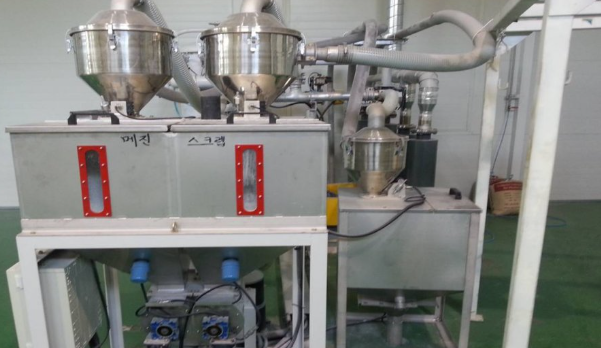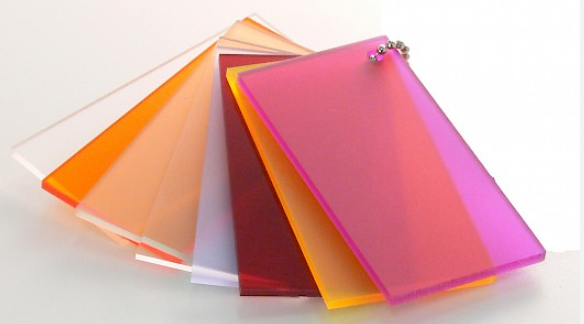The optimal temperature range for PMMA extrusion is generally between 210°C to 250°C.
Optimal Temperature Range for PMMA Extrusion
PMMA (Polymethyl methacrylate), commonly known as acrylic or acrylic glass, is widely used in industrial and commercial applications for its clarity, strength, and versatility. The extrusion of PMMA requires precise temperature control to ensure optimal quality and performance of the final product. The ideal temperature range for PMMA extrusion typically falls between 210°C to 250°C. This range balances the material’s fluidity and stability, allowing for efficient shaping without degrading its inherent properties.

Factors Influencing Extrusion Temperature
Several key factors affect the optimal temperature setting for PMMA extrusion:
- Material Composition: The specific formulation of PMMA can alter its flow properties. Additives like plasticizers or stabilizers might require adjustments in the extrusion temperature.
- Extruder Specifications: The design and capability of the extruder, including factors like screw design and barrel length, play a significant role in determining the appropriate temperature.
- Desired Product Specifications: The final product’s thickness, size, and intended use can necessitate adjustments in temperature. Thicker or more complex shapes may require higher temperatures for proper flow and shaping.
- Environmental Conditions: Ambient temperature and humidity in the extrusion facility can impact the heat transfer efficiency, necessitating slight adjustments to the extrusion temperature.
Comparing Different Temperature Settings
Understanding the effects of varying temperatures within the optimal range is crucial:
- Lower End of the Range (210°C – 220°C): Suitable for thinner or smaller PMMA products, offering a balance between flow and material stability. This range is often preferred for applications requiring high precision and detail.
- Mid-Range (221°C – 240°C): A versatile setting that works well for a wide range of PMMA products. It provides an effective balance between material flow and structural integrity.
- Higher End of the Range (241°C – 250°C): Ideal for thicker, larger, or more complex PMMA items. This higher temperature range facilitates easier flow of material, accommodating more intricate designs and shapes.
Temperature Control in PMMA Extrusion
Precise temperature control is crucial in PMMA extrusion to ensure product quality and efficiency. This section delves into the equipment and techniques vital for maintaining the desired temperature range during the extrusion process.
Equipment Used for Temperature Regulation
Extruder Barrel Heaters: These are primary components for heating the PMMA. They come in various forms such as band heaters or cartridge heaters. The power of these heaters typically ranges from 2 to 20 kW, depending on the extruder size and desired output rate.
Cooling Systems: To prevent overheating, cooling systems like fans or water cooling jackets are employed. These systems are particularly important for maintaining a stable temperature during prolonged operations.
Temperature Sensors: Thermocouples and infrared sensors are commonly used to monitor the temperature along the extruder barrel, ensuring it stays within the optimal range of 210°C to 250°C.
Temperature Controllers: PID (Proportional-Integral-Derivative) controllers are widely utilized for their precision in maintaining the set temperature. They adjust the heater’s power output based on the feedback from temperature sensors, minimizing fluctuations.
Techniques for Maintaining Consistent Temperature
Regular Calibration: Ensuring that temperature sensors and controllers are accurately calibrated is fundamental. This avoids discrepancies that could lead to quality issues in the extruded PMMA.
Optimized Screw Design: The screw design in the extruder influences the heat generated through friction. An optimized design ensures uniform heat distribution and reduces the reliance on external heaters, enhancing energy efficiency.
Environmental Control: Maintaining a stable ambient temperature in the extrusion facility helps in keeping consistent processing conditions. Fluctuations in room temperature can affect the efficiency of the cooling and heating systems.
Proactive Maintenance: Regular maintenance of the heating and cooling systems prevents unexpected breakdowns that could lead to temperature inconsistencies. This includes cleaning of cooling channels and inspection of heater elements.
Effects of Temperature Variations on PMMA Extrusion
The extrusion of PMMA (Polymethyl Methacrylate) is highly sensitive to temperature variations. These changes can significantly impact the material properties and the quality of the final product.
Impact on Material Properties
Molecular Structure: Temperature plays a crucial role in determining the molecular structure of extruded PMMA. At temperatures above 250°C, there is a risk of thermal degradation, which can lead to a breakdown in the polymer chain, affecting the material’s strength and clarity.
Mechanical Properties: Optimal temperature control ensures that PMMA retains its renowned properties, such as high impact resistance and tensile strength. Inconsistent temperatures can lead to variations in these properties, potentially resulting in a product that doesn’t meet the required specifications.
Optical Clarity: PMMA is prized for its clarity. Temperatures that are too high or too low can introduce stresses and imperfections, reducing the material’s transparency, which is a key quality for applications like lenses and windows.
Quality Issues Related to Improper Temperature Settings
Surface Defects: Improper temperature control can cause surface defects like streaks, burns, or blisters. These defects not only affect the appearance but can also compromise the structural integrity of the PMMA product.
Dimensional Instability: PMMA products need to maintain precise dimensions. Fluctuations in extrusion temperature can lead to warping or dimensional inaccuracies, making the product unsuitable for precision applications.
Increased Rejection Rates: Consistency is key in mass production. Temperature variations can lead to increased rejection rates, elevating production costs and decreasing overall efficiency.
Processing Speeds: The speed of the extrusion process is closely tied to temperature. Inadequate temperatures can slow down the production line, affecting throughput and increasing the time to market.
Troubleshooting Common Temperature-Related Issues in PMMA Extrusion
Maintaining the right temperature during the PMMA extrusion process is critical for ensuring the quality of the final product. Understanding how to identify and address temperature-related issues can significantly enhance the efficiency and output of the extrusion process.
Identifying Temperature-Related Problems
Inconsistent Material Flow: If the PMMA does not flow consistently, it might indicate temperature irregularities. Optimal flow is crucial for ensuring uniform thickness and quality, and any deviation can lead to product defects.
Appearance of Surface Defects: Surface defects such as blisters, burns, or streaks often point to temperature control issues. These defects not only compromise the aesthetics but can also weaken the structural integrity of the PMMA product.
Dimensional Variations: Products that do not meet the specified dimensions can be a sign of improper temperature settings. This issue often results in increased waste and higher production costs due to the need for rework or rejection of the products.
Solutions and Adjustments for Optimal Extrusion Quality
Regular Equipment Calibration: Ensuring that temperature sensors and controllers are properly calibrated is fundamental. This ensures accurate temperature readings, which are crucial for consistent quality.
Optimizing Extruder Settings: Adjusting the screw speed and heater settings can help maintain a stable temperature. This might involve trial and error, but finding the right settings can greatly improve product quality.
Environmental Control: Maintaining a consistent ambient temperature in the extrusion facility can help stabilize the extrusion process. Fluctuations in the external environment can impact the efficiency of the heating and cooling systems used in the extrusion process.
Proactive Maintenance: Regularly inspecting and maintaining the extrusion equipment, including the heaters and cooling systems, can prevent temperature-related issues before they affect production.

Case Studies: PMMA Extrusion Temperature Optimization
Exploring case studies in the industry provides valuable insights into the practical aspects of temperature optimization in PMMA extrusion. These cases highlight both the successes and challenges, offering a comprehensive understanding of effective strategies and common pitfalls.
Successful Industrial Applications
Automotive Industry: In one instance, an automotive parts manufacturer optimized the extrusion temperature for PMMA to produce clearer and more durable headlight covers. By maintaining temperatures consistently within the 220°C to 240°C range, they achieved a product with excellent light transmission and impact resistance, crucial for automotive safety standards.
Signage and Display Manufacturing: A company specializing in commercial signage found that by fine-tuning their extrusion temperatures to the lower end of the PMMA spectrum (around 210°C to 220°C), they could enhance the precision and clarity of their products. This adjustment resulted in a significant reduction in surface defects and improved the aesthetic appeal of their signs, crucial for this visually-driven market.
Medical Devices: A medical device manufacturer using PMMA for transparent components implemented strict temperature control, maintaining a steady 230°C. This precision ensured that their products met the high-quality standards required for medical applications, such as consistent clarity and strength.
Lessons Learned from Temperature Management Challenges
Excessive Downtime Due to Temperature Fluctuations: A packaging company experienced frequent downtime due to inconsistent extrusion temperatures leading to product defects. They learned the importance of regular maintenance and calibration of temperature sensors, which reduced downtime and increased production efficiency.
Material Wastage from Improper Temperature Settings: Another case involved a high wastage rate due to incorrect temperature settings, which caused the PMMA to degrade. The company learned to implement more frequent checks and real-time monitoring of the extrusion temperature, significantly reducing material wastage.
Balancing Speed and Quality: A common challenge faced was balancing the extrusion speed with temperature to maximize output without compromising quality. Through trial and error, manufacturers found that a slight increase in temperature could facilitate faster extrusion while still maintaining product quality, thus optimizing production time and cost.




